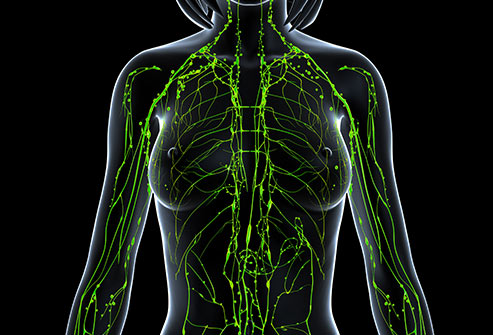| There are many therapies that can potentially help your body recover from lymphedema.
Manual lymphatic drainage
A type of contemporary Western massage, developed in France in the1930s by Danish physical therapist Dr E Vodder,
consisting of various manipulations intended to stimulate the lymphatic drainage of various organs and tissues. Manual
lymphatic drainage aims to eliminate bacteria, toxins, viruses, wastes and excess water, and addresses blocks in lymphatic
circulation, which may cause congestion and peripheral edema. Four basic techniques are employed: stationary circles, pumping, rotation
rotation and scooping, which are followed by stroking the tissues toward the sites of normal lymphatic drainage.
Manual lymphatic drainage has been used for various conditions, including acne, arthritis, bums, oedema, inflammation
and sinusitis.
Craniosacral Therapy
Craniosacral Therapy uses very gentle contact. It supports the tissues of the body in the release of held tension to allow the musculature to relax more fully. It can be useful to release structural trauma/damage in the head, neck & shoulder area. Through the pathways from the spinal column, communication and connection can be made with other parts of the body to support multi-layered issues that can help to stimulate lymph flow throughout the lymphatic system and decongest the connective tissues of the body. It is useful for chonic inflammatory conditions. Conditions ending in an "itis" like tendinitis, bursitis, colitis, sinusitis, arthritis are some examples.
Lymphedema
What Is It?
In a word, swelling. Extra fluid builds up in your tissue when your lymphatic system isn't working well, usually because your lymph nodes were damaged or removed. It's often a side effect of cancer treatment and can show up years later.

What Happens
The lymphatic system is part of your immune system. It moves fluid through your body, picking up waste, bacteria, and viruses. Your lymph nodes filter out the waste and flush it from your body. When something goes wrong, the fluid backs up in your tissue. Most often, your lymph nodes got damaged. Sometimes the vessels get blocked. But lymphedema can also happen without a clear reason.
Symptoms
It can happen anywhere in your body, including your chest, head, and genitals, but it's usually in just one arm or leg. The swelling might be so minor that you barely notice, or so severe it makes it hard to move that part of your body well. A limb that feels full or heavy, skin that seems tight, and jewelry and clothes that are suddenly snug can be from lymphedema. You could be achy or have hardened skin in the affected area.
Who Is Likely to Get It?
Many people with it had surgery to remove lymph nodes to check for the spread of breast cancer, or treated their cancer with surgery or radiation. Being older, overweight, or having rheumatoid or psoriatic arthritis raises your chances. You could also get it from an infection while traveling in certain tropical countries. Rare disorders passed in families can affect the development of the nodes and vessels in the lymph system, too.
Prevention
After surgery or radiation involving your lymph nodes, keep the affected arm or leg above your heart. Don't apply ice or heat to it. Skip tight clothing and jewelry. Don't cross your legs while sitting.
Diagnosis
Your doctor will rule out other causes of swelling, such as infections and blood clots. He'll measure the swollen area and compare it with a similar unaffected one. Tests that check for blockages and see how your lymphatic system is working include MRI and lymphoscintigraphy, which follows special dye injected into your body as it moves through the lymph vessels. Grades (1-4) or stages (I-III) describe how severe lymphedema is.
Treatment
Craniosacral Therapy can potentially help control the swelling and keep it from getting worse. Getting to and staying at a healthy weight may make it better.
Compression Device
You can use a pressure cuff to help move lymph fluid out of your arm or leg. A pump fills the pockets with air and then deflates them over and over in a specific pattern to squeeze the lymph back toward your body.

Source: https://www.webmd.com/a-to-z-guides/ss/slideshow-lymphedema?ecd=soc_fb_171227_cons_ss_lymphedema&linkId=100000001581448
http://turningpointept.com/atp/therapies-offered/treatment-for-edema-lymphedema/
https://medical-dictionary.thefreedictionary.com/lymphatic+drainage
| 

